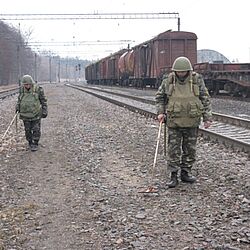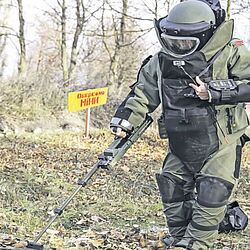Ukraine first experienced landmine contamination as a result of the conflict that began in 2014. As State Party to the Convention, Ukraine undertook to fulfill obligations including clearing contaminated areas under its jurisdiction or control, providing education on the risk of mines and other explosive remnants of war (ERW), and assisting mine victims. According to data from the 2021 Landmine Monitor as provided by Ukraine, there were over 2,700 mine and other ERW casualties between 2014 and 2019, bringing the total number of casualties to more than 4,700. The current conflict may only increase those figures, which already are some of the highest in Europe.
“Starting on 4 April, the international community will commemorate a week for Mine Awareness and Assistance in Mine Action. Let’s take this opportunity to highlight the effect of anti-personnel mines on civilian populations in Ukraine and in protracted conflicts like Afghanistan, Colombia, and Iraq… or places like Angola, Cambodia, Chad, or Zimbabwe, where mines lay dormant decades after conflict have ceased, killing and maiming civilians including children. We must stand firm in the Convention’s legally binding premise to ‘never, under any circumstance, use anti-personnel mines, develop, produce, otherwise acquire, stockpile, retain or transfer to anyone, directly or indirectly, anti-personnel mines’”, concluded the Ambassador.
Editorial note: The Convention was adopted and signed 25 years ago and entered into force in 1999. It is the prime humanitarian and disarmament treaty aimed at ending the suffering caused by landmines by prohibiting their use, stockpiling, production, and transfer, ensuring their destruction, and assisting the victims. Together the States Parties have destroyed nearly 54 million mines. Demining has resulted in millions of square metres of land that were once dangerous to be released for normal human activity.




